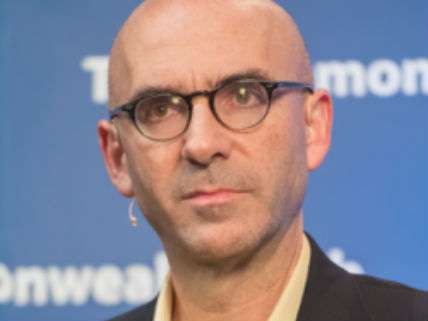Climate Progress' Resident Hysteric Attacks Lomborg Study of the Inefficacy of Paris Greenhouse Gas Emissions Pledges
Cites MIT "expert" who has apparently not read the work of his colleagues who agree with Lomborg

Climate Progress' resident climate hysteric, Joe Romm*, has predictably enough cobbled together an attack on the new study by Bjorn Lomborg, head of the Copenhagen Consensus Center. In his peer-reviewed study published in the journal Global Policy, Lomborg adds up all of the pledges to rein in greenhouse gas emissions made by the world's nations in advance of the big Paris climate change conference that convenes later this month. As I reported earlier today, Lomborg finds that if the Paris pledges are faithfully sustained for the rest of the century, they would reduce future man-made global warming by about -0.17 degrees Celsius below what they would otherwise have been.
Romm does a lot hand-waving in an effort to suggest mendacity by Lomborg (and, of course adds a ritual denunciation of the Kochs), but a fair reading of Lomborg's article would find no dishonesty. It is possible to disagree with some his assumptions, but Lomborg is not hiding anything.
In any case, Romm particularly cites John Sterman, Professor at MIT's Sloan School of Management and Director of MIT's System Dynamics Group as a Lomborg critic. Sterman told Climate Progress:
Dr. Lomborg sets out to show that the INDCs are useless. To do so he grossly misrepresents the pledges. He constructs an incomplete accounting of the pledges that omits the pledges of many nations, ignores China's pledge to cap its emissions by 2030, and assumes that the [European Union countries] abandon their commitment to emissions reductions as soon as their pledges are fulfilled."
Grossly misrepresents? Perhaps Professor Sterman should take a look at the 2015 Energy and Climate Outlook Report by his academic colleagues at the MIT Joint Program on the Science and Policy of Global Change. The folks at the Joint Program parse the pledges made by mid-August which include those by the U.S., China, and the E.U. - basically the major ones included in Lomborg's analysis. So what do they find? From the report:
Assuming the proposed cuts are extended through 2100 but not deepened further, they result in about 0.2°C less warming by the end of the century compared with our estimates, under similar assumptions, for Copenhagen–Cancun. Other adjustments in our economic projections resulted in another 0.2°C reduction in warming…
As highlighted in the summary of major findings and Box 2, the additional mitigation by major emitting countries (based on the INDCs proposed ahead of the COP21) have lowered our estimate of future warming by about 0.2°C. Recalibration of the climate model and our economic model over the past year have had offsetting effects, with the climate recalibration adding 0.2°C by 2100, and the recalibration of the economic model lowering the 2100 temperature by the same amount. By accurately separating recalibration and the impacts of policy, we can see the contribution of additionalmeasures proposed in the INDCs, assuming those policies are implemented and maintained through the end of the century.
This basically the same thing that Lomborg did in his analysis. Lomborg found a reduction of -0.17 degrees Celsius and the MIT folks report a -0.2 degree reduction. I await Romm's denunciation of the "nonsense" being perpetrated by the "confusionists" at MIT's Joint Center.
*For background on Romm, go here.


Show Comments (121)